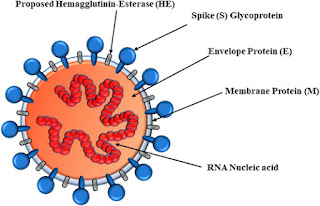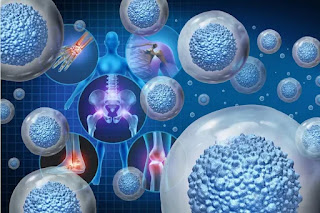Stinging nettle extract inhibits SARS-CoV-2 cell fusion
Stinging nettle extract inhibits SARS-CoV-2 cell fusion
In a new report presented on the bioRxiv* preprint server, scientists at Ghent University and KU Leuven, Belgium, exhibited that Urtica dioica agglutinin (UDA), a monomeric lectin separated from stinging weed rhizomes, repressed extreme intense respiratory disorder Covid 2 (SARS-CoV-2) variations of concern (VOCs) cell to cell combination.
Foundation
Related Stories
What is the drawn out antibody viability against SARS-CoV-2 contamination?
Early discovery of SARS-CoV-2 variations through wastewater sequencing uncovers mysterious transmission
Nanoparticle immunization could safeguard against creature infections including future SARS-CoV-2 variations
From the underlying 41 Covid sickness 2019 (COVID-19) patients in Hubei territory, China, the SARS-CoV-2 immediately extended to turn into a worldwide pandemic with north of 556 million affirmed contaminations and more than 6.35 million fatalities in a little more than over two years.
The ongoing review's creators recently recognized plant lectins as an unmistakable class of antiviral mixtures. A sugars joining little monomeric protein called UDA was found in the rhizomes of stinging weed plants.
UDA specifically ruins the replication of various infections, including Covids, in various cell sorts. Earlier examinations with respiratory syncytial infection (RSV), human immunodeficiency infection (HIV), and flu infection exhibited that UDA hinders viral section, potentially by obstructing infection combination.
Quite, the continuous SARS-CoV-2 pandemic underscores the need for a wide range antiviral specialist that can be utilized promptly to rapidly lessen viral transmission when a pestilence related with a (reappearing )infection emerges.
About the review
In the current review, the specialists investigated UDA's true capacity as an expansive range SARS-CoV-2 antiviral medication. Deciding whether the lectin was a suitable far reaching antiviral inhibitor requires settling its exact method of activity top to bottom. The group surveyed UDA against a screen of SARS-CoV-2 variations in a few cell types.
At first, the plant lectin UDA was surveyed against pseudotyped SARS-CoV-2. Thusly, the antiviral viability of UDA was inspected against the wild-type infection. The group likewise considered UDA in contrast to the SARS-CoV-2 Omicron and Delta VOCs.
To additionally investigate the antiviral strength of UDA, the specialists surveyed UDA's antiviral capability in separated cells in three-layered (3D)- like designs that were air-uncovered, known as air-fluid connection point (ALI) societies. To recognize what area of the SARS-CoV-2 spike (S) protein or cell receptor was accountable for UDA's antiviral impact, they used surface plasmon reverberation (SPR).
The specialists next assessed UDA's capability to obstruct cell SARS-CoV-2 combination using a split neon-green sub-atomic stage to all the more likely grasp the exact atomic focal point of UDA in SARS-CoV-2 entry. They additionally resolved which carbs on the S protein were important for UDA restricting.
Results and ends
The review results showed that in A549 angiotensin-changing over chemical 2 (ACE2) transmembrane protease serine 2 (TMPRSS2) cells, UDA successfully forestalls section of pseudotyped SARS-CoV-2 with half-maximal inhibitory fixation (IC50) values shifting from 0.32 to 1.22 microM.
Further, UDA repressed the replication of the early SARS-CoV-2 Wuhan-Hu-1 strain in Vero E6 cells with an IC50 worth of 225 nM, and the SARS-CoV-2 Beta, Alpha, and Gamma VOCs with an IC50 scope of 115 to 171 nM. Besides, UDA has antiviral movement in U87.ACE2+ cells against the most recent Omicron and Delta VOCs, with IC50 upsides of 0.9 and 1.6 microM, separately.
Strangely, UDA kept up with antiviral viability against the SARS-CoV-2 20A.EU2 variation inside the nanomolar range when assessed in ALI essential lung epithelial cell societies. As per SPR examinations, UDA ties to the S protein of the SARS-CoV-2 in a fixation dependent way, maybe impeding cell grip or ensuing viral passage.
Besides, in ensuing unthinking examinations utilizing cell combination tests, UDA forestalled SARS-CoV-2 S protein-worked with layer combination. As per the ongoing cell combination examinations, an immersing grouping of UDA was essential for the unique combination cycle to inspire a practically full inhibitory impact. The researchers found that the inhibitory capability of UDA fundamentally diminished when unbound UDA was eliminated in front of the beginning of cell combination. Besides, N-glycosylation erasures across the S2 subunit of the S protein in pseudotyped SARS-CoV-2 freaks didn't influence their aversion to UDA's antiviral impacts.
To finish up, the current work exhibited that UDA was an intense and wide-range SARS-CoV-2 combination inhibitor. The review discoveries portrayed that UDA usefully keeps SARS-CoV-2 from entering objective cells. Furthermore, the ongoing perception that UDA held antiviral viability against different SARS-CoV-2 VOCs shows that UDA ought to be viewed as an antiviral with a captivating container character that could be a useful instrument for fighting present and planned SARS-CoV-2 variations.
*Significant notification
bioRxiv distributes starter logical reports that are not peer-looked into and, in this manner, ought not be viewed as definitive, guide clinical practice/wellbeing related conduct, or treated as laid out data.


.webp)

Comments
Post a Comment